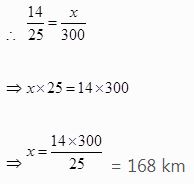Class 8 - Mathematics
Direct and Inverse Proportions - Exercise 13.1
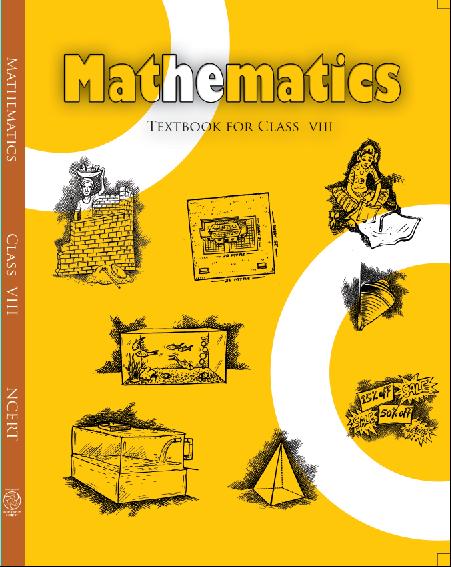
Top Block 1
Question : 1.Following are he car parking charges near a railway station up to:
4 hours Rs.60
8 hours Rs.100
12 hours Rs.140
24 hours Rs.180
Check if the parking charges are in direct proportion to the parking time.
Answer :
Charges per hour:
C1 = 60⁄4 = Rs.15
C2 = 100⁄8 = Rs.12.50
C3 = 140⁄12 = Rs.11.67
C4 = 180⁄24 = Rs.7.50
Here, the charges per hour are not same, i.e.,C1 ≠ C2 ≠ C3 ≠ C4
Therefore, the parking charges are not in direct proportion to the parking time.
Question : 2. A mixture of paint is prepared by mixing 1 part of red pigments with 8 parts of base. In the following table, find the parts of base that need to be added.
| Parts of red pigments | 1 | 4 | 7 | 12 | 20 |
| Parts of base | 8 | …. | …. | …. | …. |
Answer :
Let the ratio of parts of red pigment and parts of base be a⁄b.
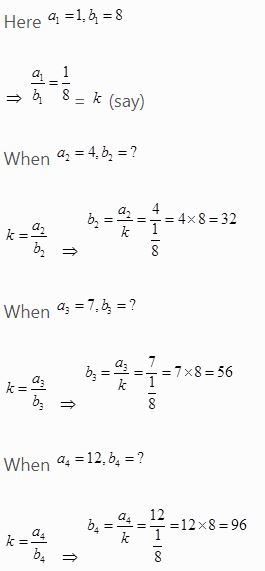

| Parts of red pigments | 1 | 4 | 7 | 12 | 20 |
| Parts of base | 8 | 32 | 56 | 96 | 160 |
Question : 3. In Question 2 above, if 1 part of a red pigment requires 75 mL of base, how much red pigment should we mix with 1800 mL of base?
Answer :
Let the parts of red pigment mix with 1800 mL base be 𝓍
| Parts of red pigments | 1 | x |
| Parts of base | 75 | 1800 |

Mddle block 1
Question : 4. A machine in a soft drink factory fills 840 bottles in six hours. How many bottles will it fill in five hours?
Answer :
Let the number of bottles filled in five hours be
| Hours | 1 | x |
| Bottles | 75 | 1800 |
Here ratio of hours and bottles are in direct proportion.
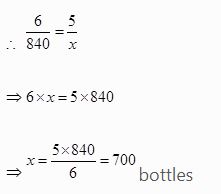
Question : 5. A photograph of a bacteria enlarged 50,000 times attains a length of 5 cm as shown in the diagram. What is the actual length of the bacteria? If the photograph is enlarged 20,000 times only, what would be its enlarged length?
Answer :
Let enlarged length of bacteria be x .
Actual length of bacteria

| Length | 5 | x |
| Enlarged Length | 50,000 | 20,000 |
Here length and enlarged length of bacteria are in direct proportion.
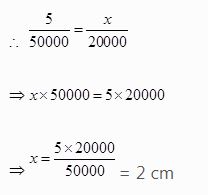
Question : 6. In a model of a ship, the mast is 9 cm high, while the mast of the actual ship is 12 m high. If the length if the ship is 28 m, how long is the model ship?
Answer :
Let the length of model ship be x
| Length of actual ship (in mm) | 12 | 28 |
| Length of model ship (in cm) | 9 | 𝓍 |
Here length of mast and actual length of ship are in direct proportion.

Question : 7. Suppose 2 kg of sugar contains 9 x 105 crystals. How many sugar crystals are there in (i) 5 kg of sugar? (ii) 1.2 kg of sugar?
Answer :
Let sugar crystals be x
| Weight of sugar (in KG) | 2 | 5 |
| No. of Crystals | 9 x 106 | 𝓍 |
Here weight of sugar and number of crystals are in direct proportion.

| Weight of sugar (in KG) | 2 | 1.2 |
| No. of Crystals | 9 x 106 | 𝓍 |
(ii) Let sugar crystals be
Here weight of sugar and number of crystals are in direct proportion.
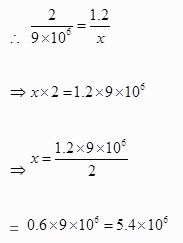
Question : 8. Rashmi has a road map with a scale of 1 cm representing 18 km. She drives on a road for 72 km. What would be her distance covered in the map?
Answer :
Let distance covered in the map be 𝓍
| Actual Distance (in KM) | 18 | 72 |
| Distance covered in map (in cm) | 1 | 𝓍 |
Here actual distance and distance covered in the map are in direct proportion.
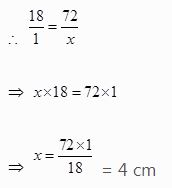
Question : 9. A 5 m 60 cm high vertical pole casts a shadow 3 m 20 cm long. Find at the same time (i) the length of the shadow cast by another pole 10 m 50 cm high (ii) the height of a pole which casts a shadow 5 m long.
Answer :
Here height of the pole and length of the shadow are in direct proportion.
And 1 m = 100 cm
5 m 60 cm = 5 x 100 + 60 = 560 cm
3 m 20 cm = 3 x 100 + 20 = 320 cm
10 m 50 cm = 10 x 100 + 50 = 1050 cm
5 m = 5 x 100 = 500 cm
(i) Let the length of the shadow of another pole be 𝓍
| Height of Pole (in cm) | 560 | 1050 |
| Length of Shadow (in cm) | 320 | 𝓍 |

(ii) Let the height of the pole be x.
| Height of Pole (in cm) | 560 | 𝓍 |
| Length of Shadow (in cm) | 320 | 500 |
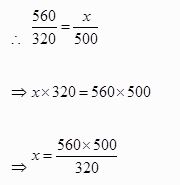
Hence height of the pole is 8 m 75 cm.
Question : 10. A loaded truck travels 14 km in 25 minutes. If the speed remains the same, how far can it travel in 5 hours?
Answer :
Let distance covered in 5 hours be 𝓍 km.
∵ 1 hour = 60 minutes
∴ 5 hours = 5 x 60 = 300 minutes
| Distance (in km) | 14 | 𝓍 |
| Time (in minutes) | 25 | 300 |
Here distance covered and time in direct proportion.
